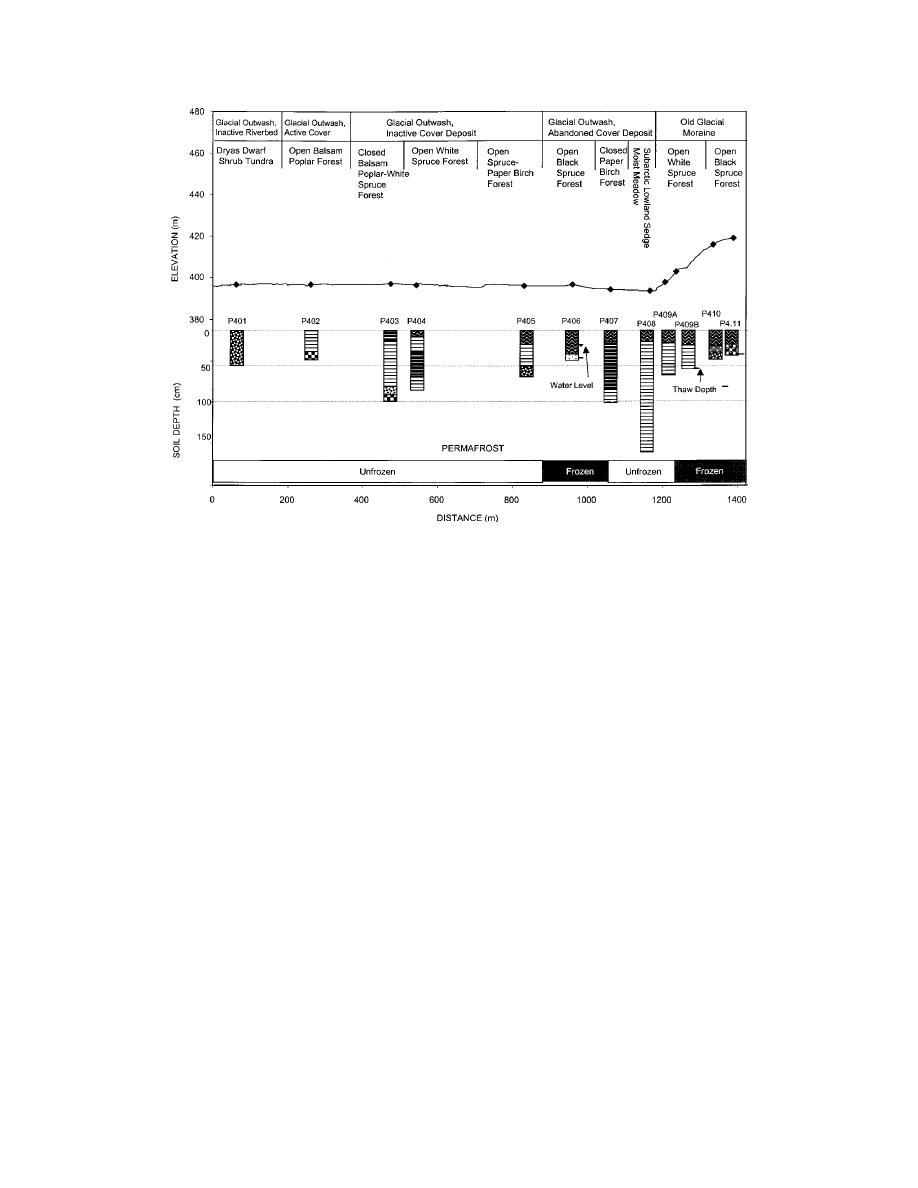
g. Transect 4 in the Delta Creek Floodplain.
Figure 7 (Cont'd).
exposed ridges supported bearberry dwarf scrub tun-
kettle depressions. Organic matter accumulation also
dra and open low mesic shrub birchericaceous scrub,
was highly variable. Well-drained upland sites without
both of which had abundant lichens. Poorly drained soils
permafrost had open paper birch forest and closed tall
on slopes had permafrost and supported black spruce
willow scrub. Poorly drained sites with permafrost had
forests. Basins had thick organic matter accumulations
open low mixed shrubsedge tussock bogs and open
and supported subarctic lowland sedge wet meadows.
black spruce. Subarctic lowland sedge moist meadows,
Within the Lower Delta Creek Lowlands (Transect
an uncommon vegetation type, occurred in somewhat
1), the geomorphology was dominated by hilly
well-drained, fine-grained lacustrine material in drained
retransported deposits associated with eroding Tertiary
kettle basins.
Nenana Gravel deposits and by organic deposits (Fig.
Within the Jarvis Creek Glaciated Lowlands
7f). Well-drained soils on crests supported closed shrub
(Transect 6), the geomorphology was dominated by
birchericaceous scrub, while poorly drained soils on
young moraines associated with the Donnelly glacia-
gentle slopes supported black spruce forests, closed
tion and old moraines associated with the Delta glacia-
shrub birchericaceous scrub, and open low mixed
tion. On the young moraine (Transect 6a), soils also
shrubsedge tussock bog. Basin bogs with thick organic
were highly variable as described above, although or-
accumulations in swales support an unusual type of open
ganic accumulation was small (Fig. 7d). Vegetation on
low ericaceous scrub bog.
steep, gravelly, south-facing slopes had a unique veg-
Within the Delta Creek Floodplain (Transect 4), the
etation type of open quaking aspen dwarf tree scrub,
geomorphology was dominated by glaciofluvial
presumable because of the severe wind exposure.
outwash riverbed deposits, inactive cover deposits, and
Lower, wetter slopes supported closed shrub bircheri-
abandoned floodplain deposits (Fig.7g). The transect
caceous scrub and open black spruce forest. Ponds and
extended onto an old moraine. The excessively drained,
pond margins supported pondlily and subarctic low-
gravelly soils of the active riverbed were barren to par-
land sedge wet meadow, respectively. On old moraines
tially vegetated with Dryas dwarf scrub tundra. The
(Transect 6b), the topography was much more subdued,
well-drained loamy soils with interbedded silts, sands,
but gravelly soils were still common (Fig. 7c). More
17



 Previous Page
Previous Page
